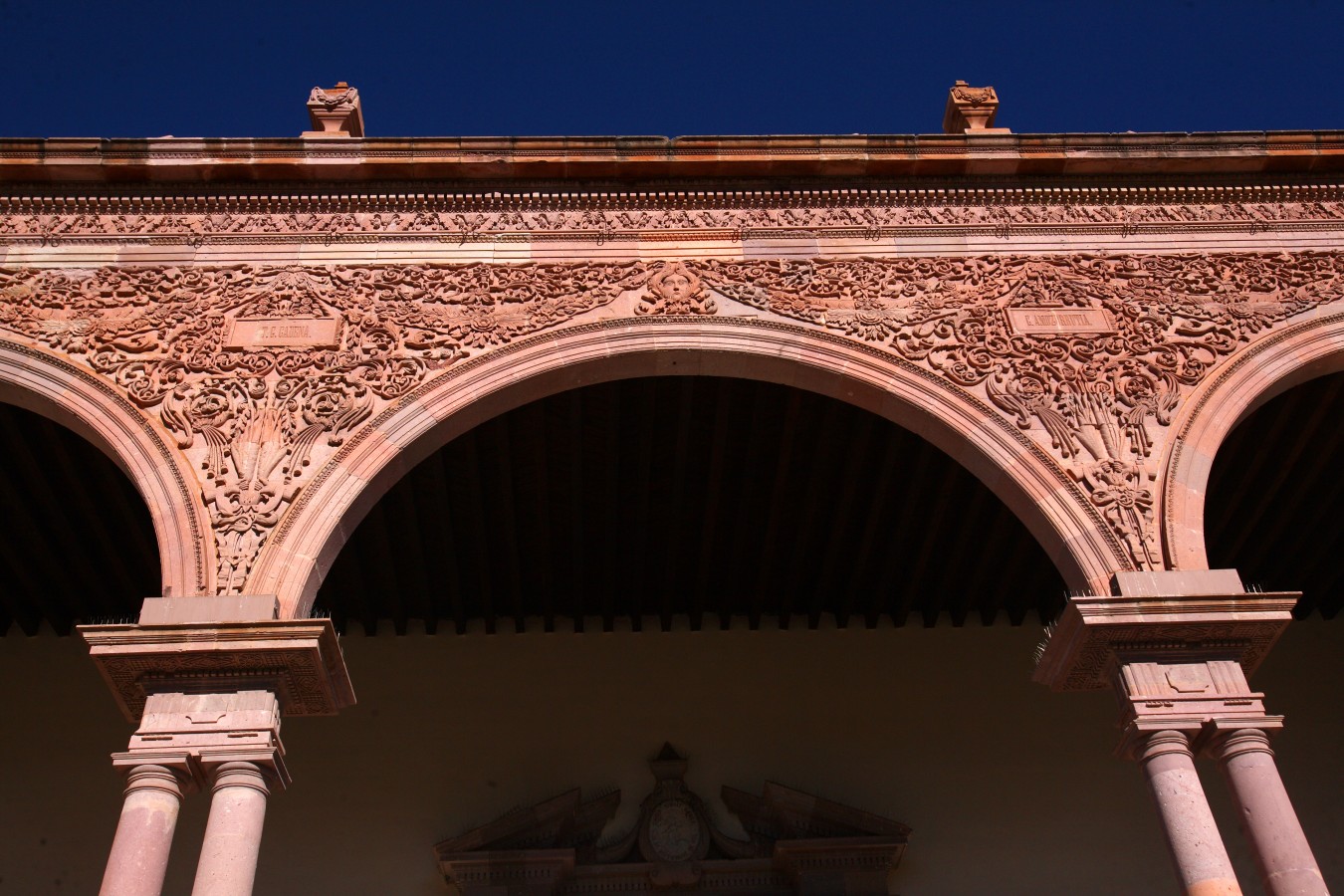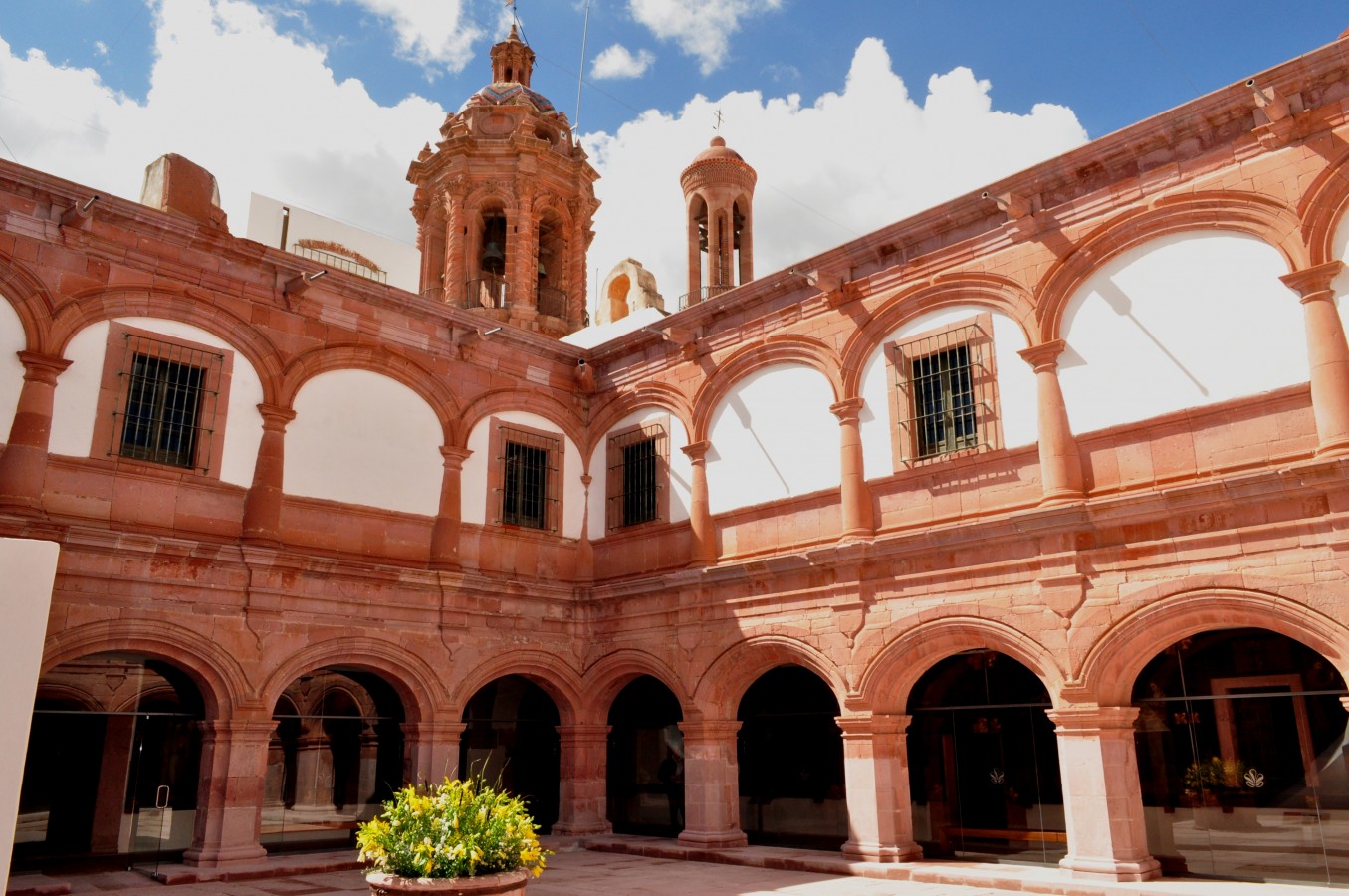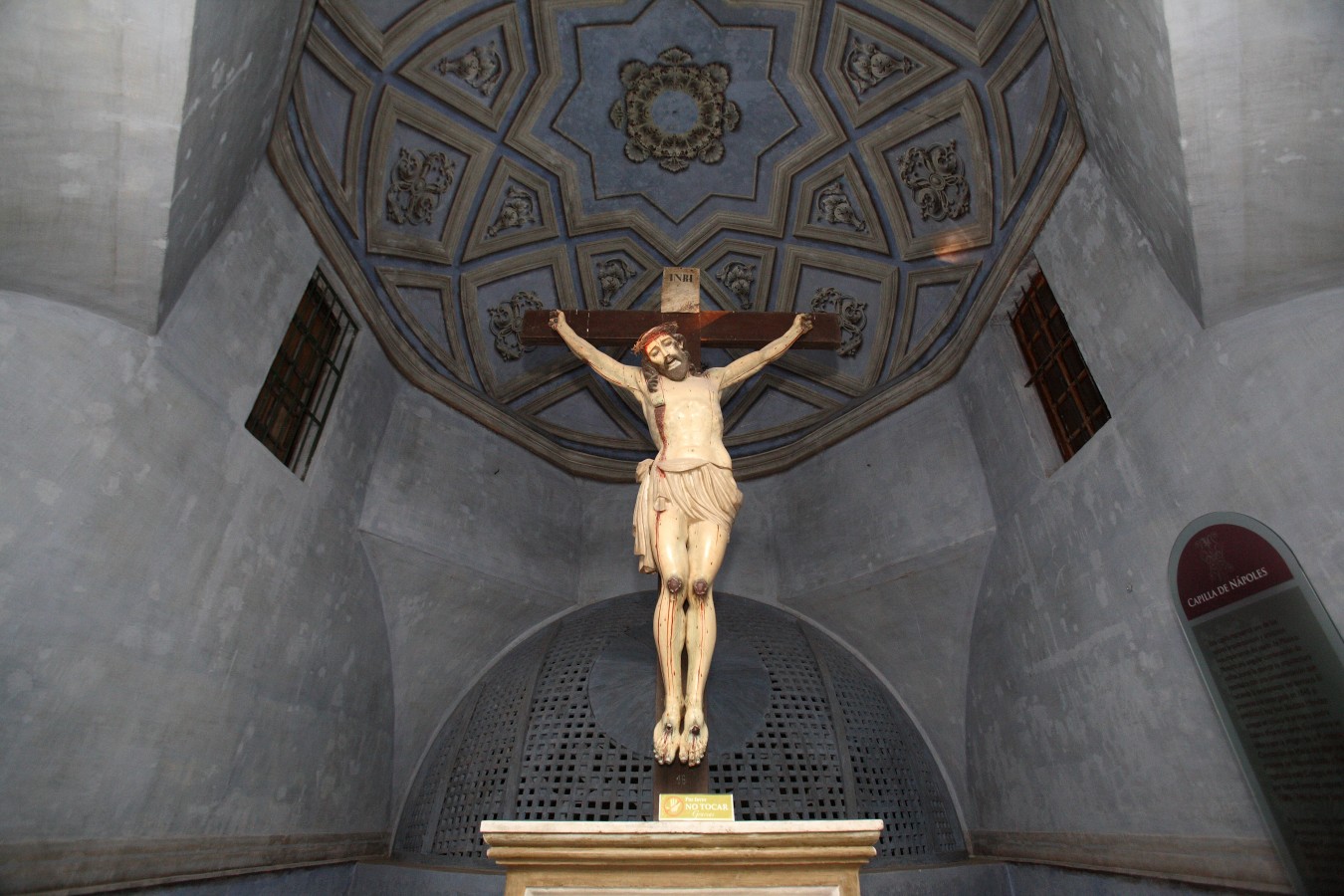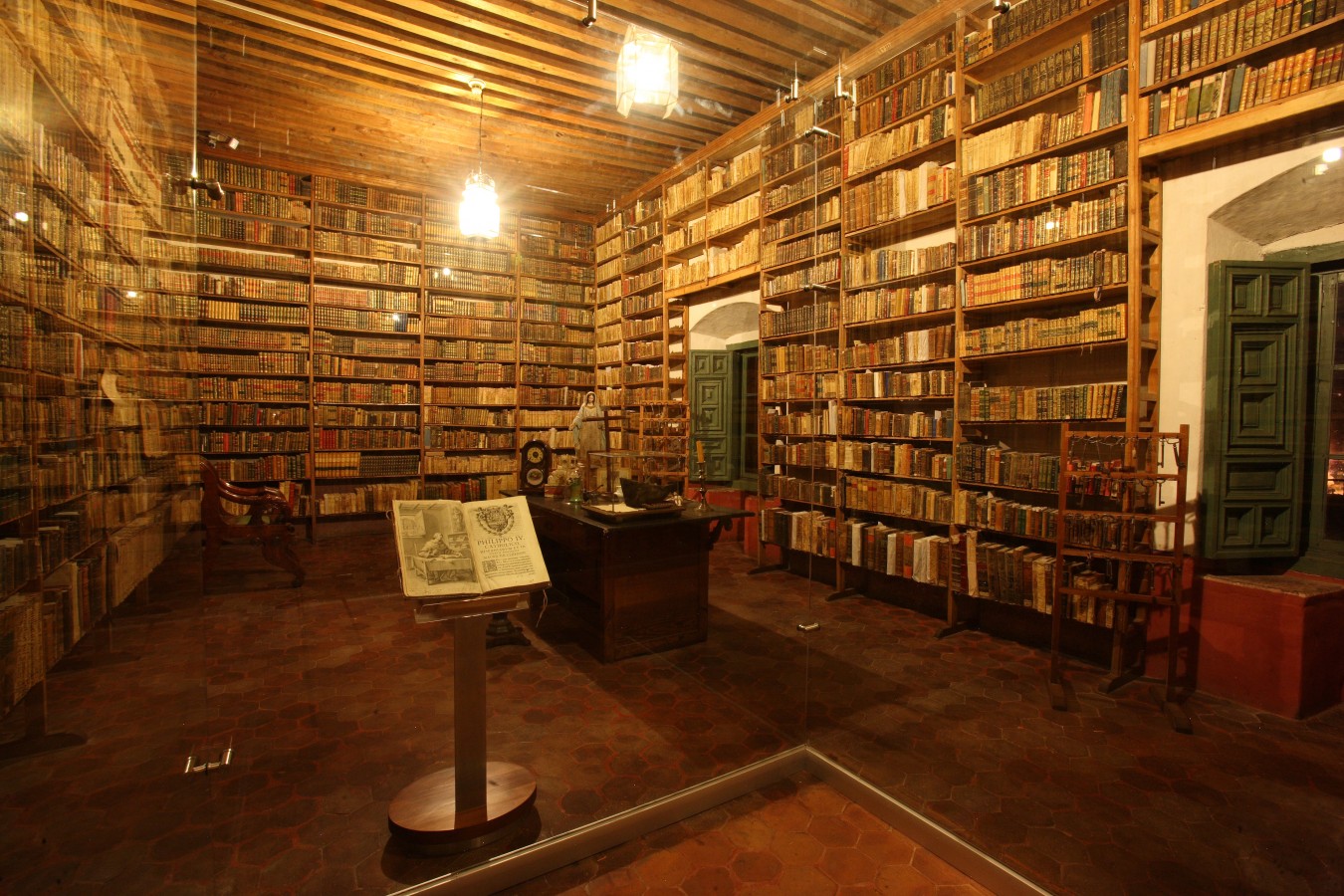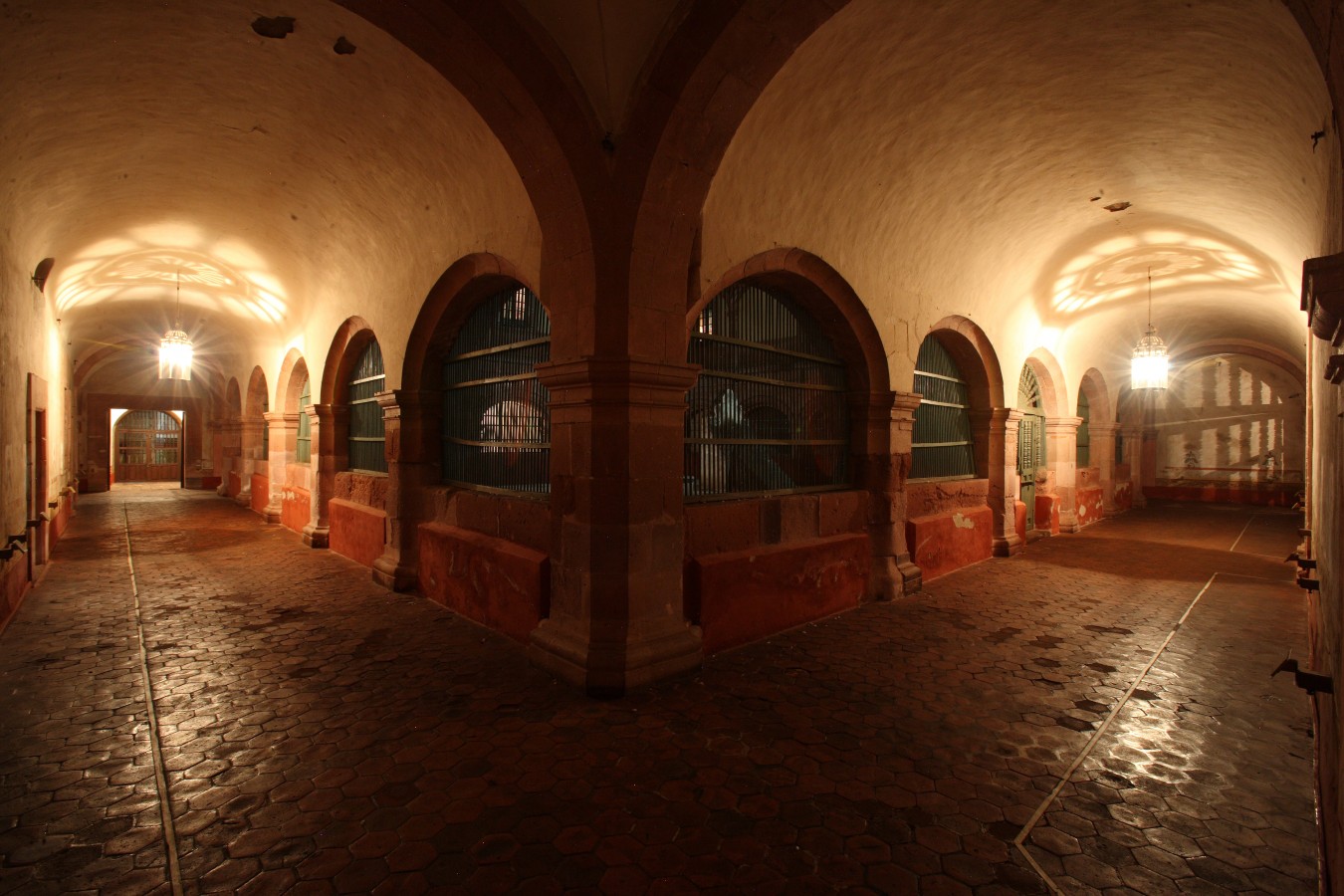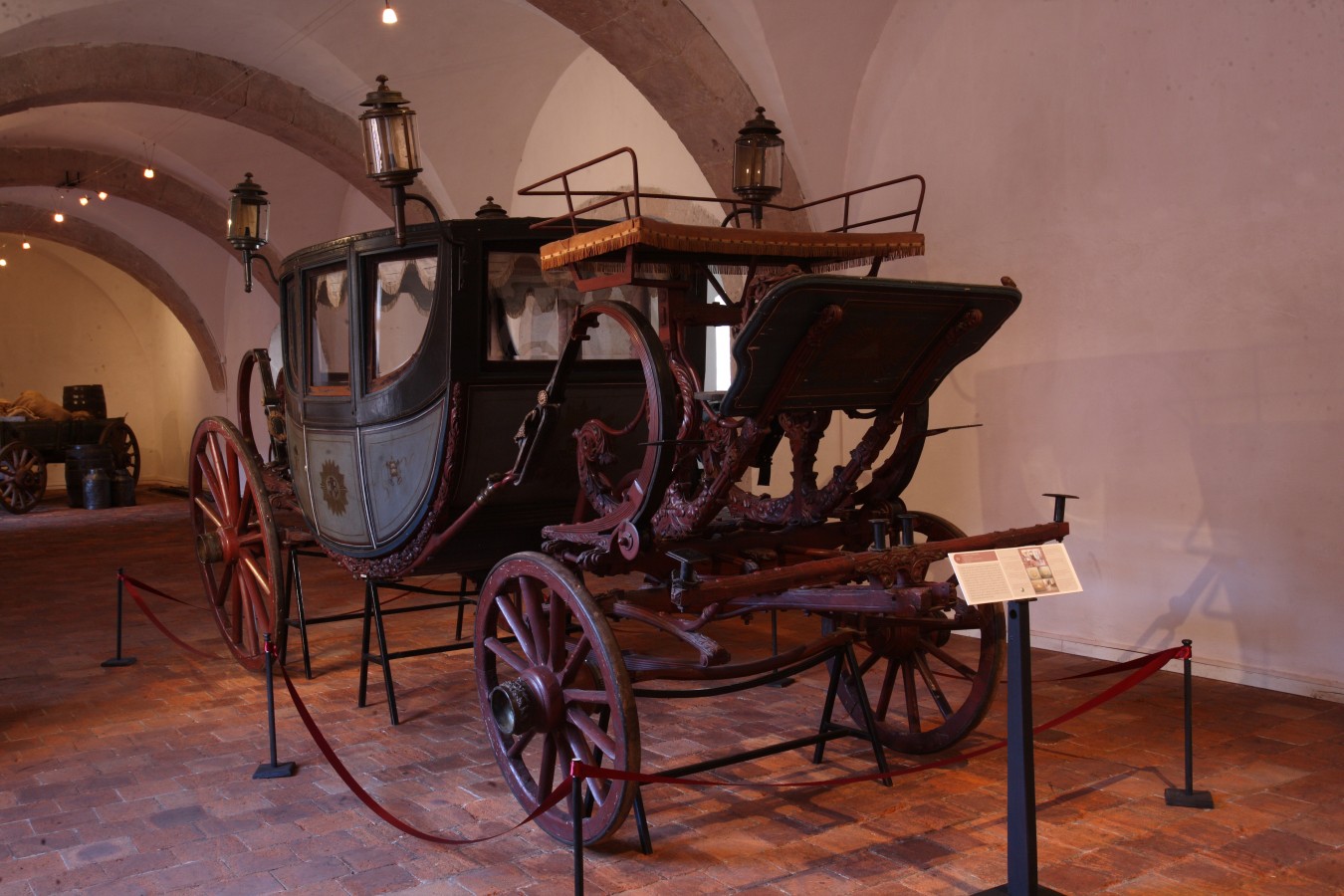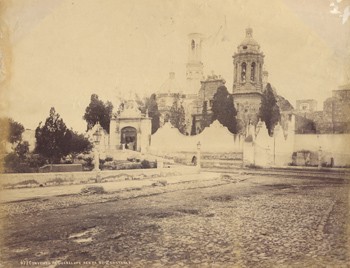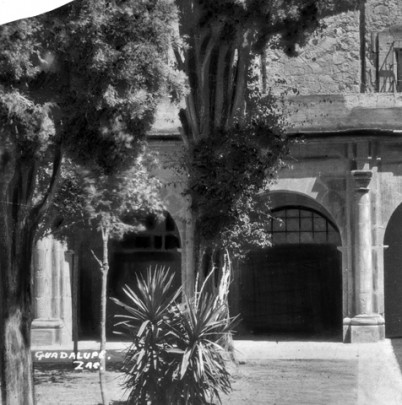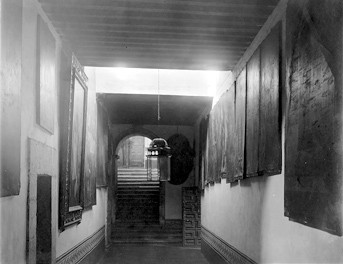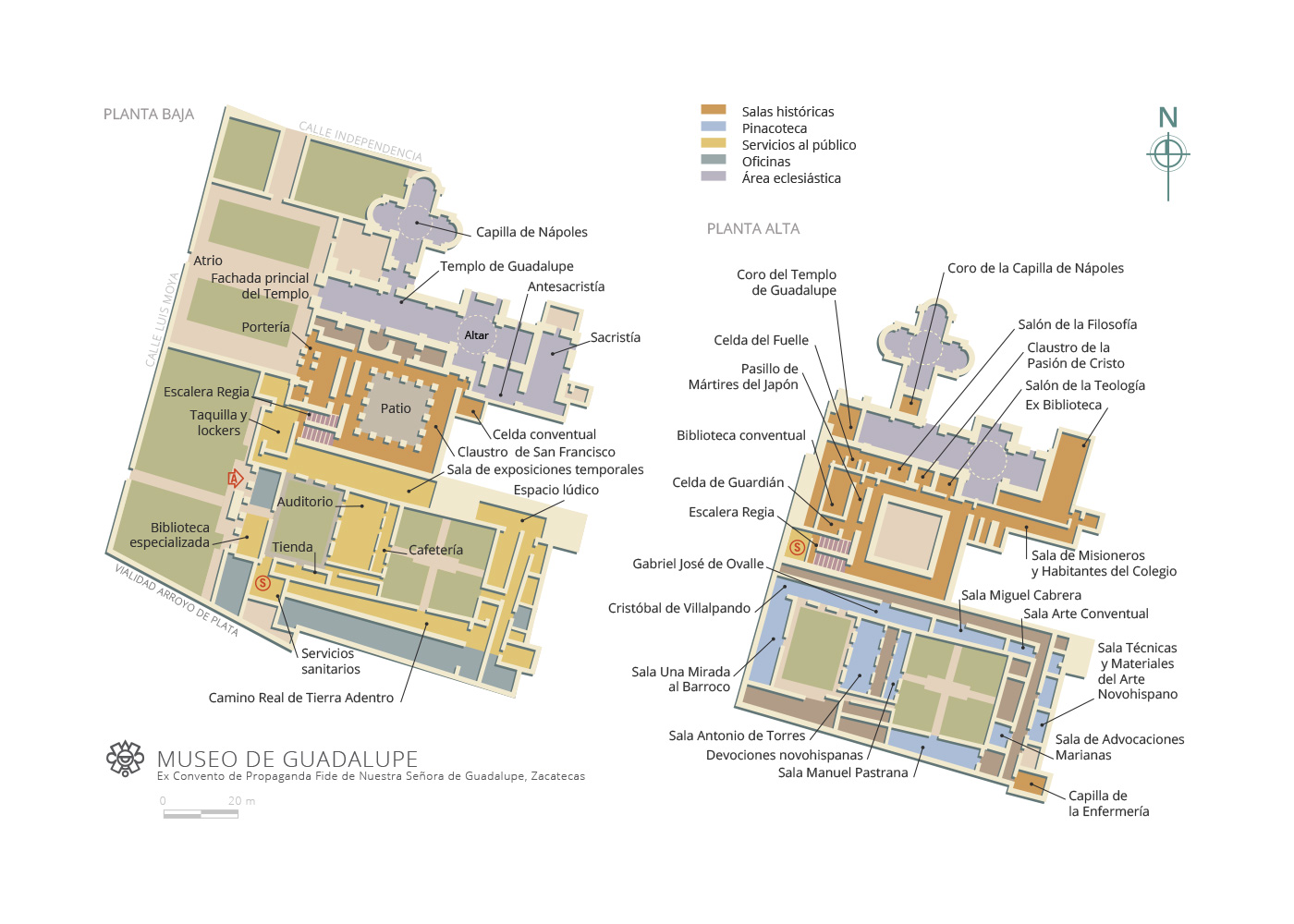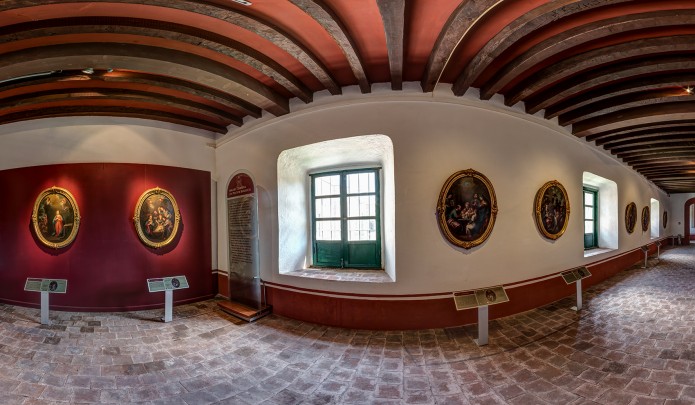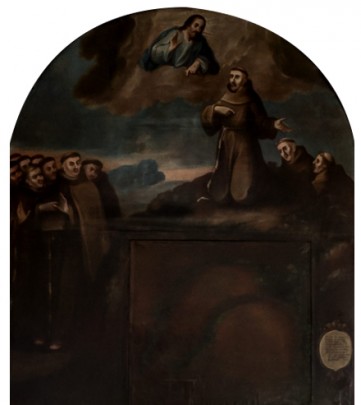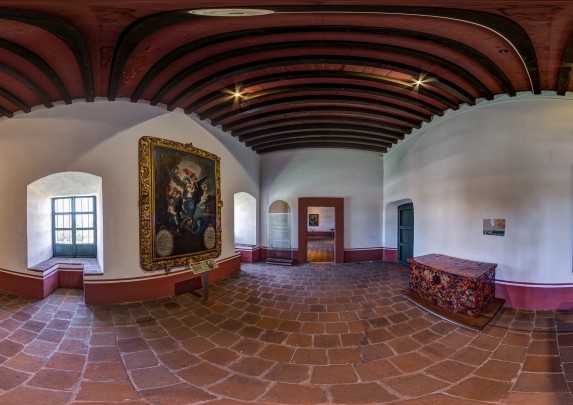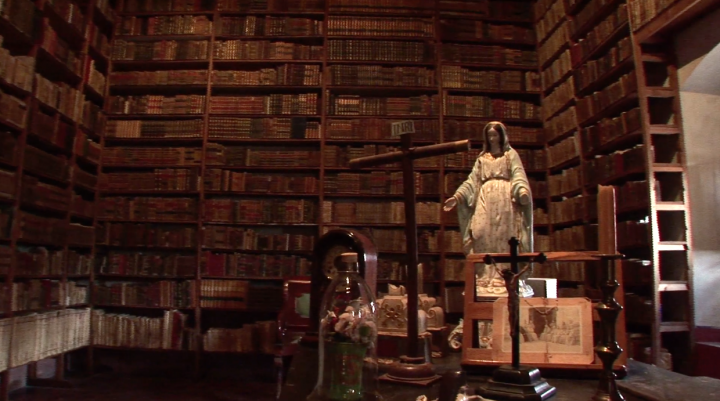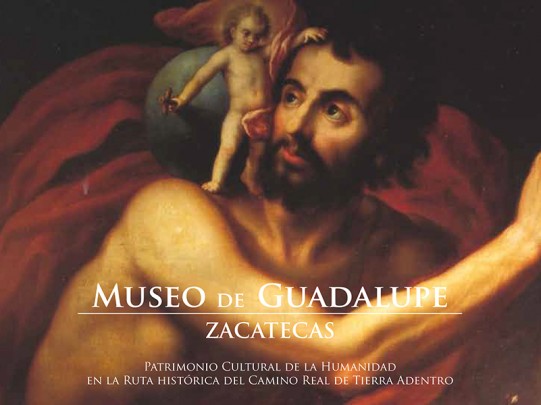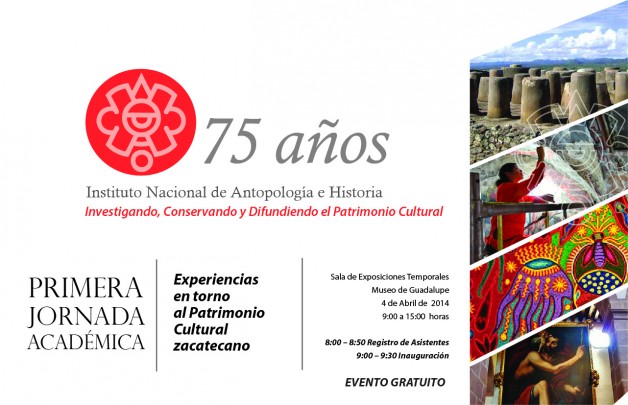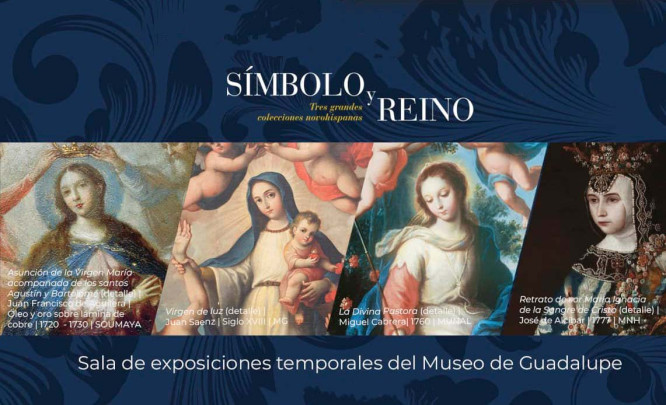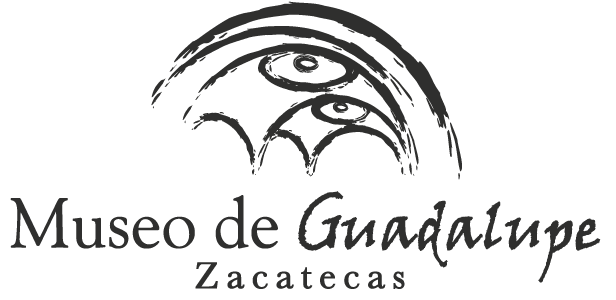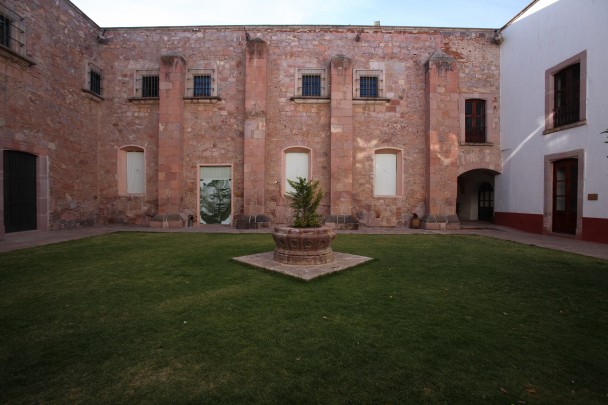Museo Regional de Guadalupe
One of the most outstanding colonial buildings in Zacatecas, it contains an excellent collection of the greatest painters of the period. Complemented by a fine collection of academic and popular sculptures of the religious art of New Spain.
Regional
About the museum
One of the most important Mexican museums of viceregal art, it sits in the former Propaganda Fide Monastery of Our Lady of Guadalupe of Zacatecas, built by Franciscans over the course of the eighteenth century. It originally covered an area of roughly ten square miles and was built with the help of contributors and the Zacatecas city government.
Due to the Reformation Laws, the friars were dismissed from the cloisters in 1859 and the Zacatecas state government allowed the building to be used for different purposes, including housing, a stables and a candle factory. Years later, some Franciscans returned and occupied the adjacent cloisters. In 1862, the Guadalupe school of arts and crafts was set up in a part of the building, on the initiative of the local authorities.
In 1878, the Guadalupe children’s orphanage was founded. In 1908, the Propaganda Fide schools were abolished, but not the Franciscan seminary. The building opened its doors as a museum of antiquities in 1917 and it was declared a national monument in 1939. In 1971, the orphanage closed, so its rooms were incorporated into the museum, which was declared a World Heritage Site by UNESCO in 2010.
The Museum of Guadalupe, located a few minutes outside the capital of Zacatecas, has 27 permanent galleries, which include an exhibit of viceregal art from the seventeenth century, and also of Mexican art up until the twentieth century. The art collection is comprised of pieces from the most important painters of New Spain, such as Cristóbal de Villalpando, Antonio de Torres, Gabriel José de Ovalle, Miguel Cabrera, Luis Juárez, Juan Correa, Nicolás Rodríguez Juárez and Antonio de Torres, and even twentieth-century painters such as Manuel Pastrana. There is also an exhibition of feather art, sculpture made from sugarcane paste, ivory and other materials, as well as a magnificent collection of sgraffito wooden statues of saints.
Among others, the museum visit includes the following areas: the facade, which stands out for its baroque style and its relief of Saint Francis of Assisi supporting the Virgin of Guadalupe; the San Francisco cloister, where a series of 26 canvases can be seen in their original order; a royal staircase, an example of baroque splendor, which retains three enormous canvases; the monastery library, which displays more than 9,000 volumes dating from the sixteenth century to the early twentieth century, and the Cloister of the Passion of Jesus, with 29 canvases which narrate the story of the martyrdom and crucifixion of Jesus.
Due to the Reformation Laws, the friars were dismissed from the cloisters in 1859 and the Zacatecas state government allowed the building to be used for different purposes, including housing, a stables and a candle factory. Years later, some Franciscans returned and occupied the adjacent cloisters. In 1862, the Guadalupe school of arts and crafts was set up in a part of the building, on the initiative of the local authorities.
In 1878, the Guadalupe children’s orphanage was founded. In 1908, the Propaganda Fide schools were abolished, but not the Franciscan seminary. The building opened its doors as a museum of antiquities in 1917 and it was declared a national monument in 1939. In 1971, the orphanage closed, so its rooms were incorporated into the museum, which was declared a World Heritage Site by UNESCO in 2010.
The Museum of Guadalupe, located a few minutes outside the capital of Zacatecas, has 27 permanent galleries, which include an exhibit of viceregal art from the seventeenth century, and also of Mexican art up until the twentieth century. The art collection is comprised of pieces from the most important painters of New Spain, such as Cristóbal de Villalpando, Antonio de Torres, Gabriel José de Ovalle, Miguel Cabrera, Luis Juárez, Juan Correa, Nicolás Rodríguez Juárez and Antonio de Torres, and even twentieth-century painters such as Manuel Pastrana. There is also an exhibition of feather art, sculpture made from sugarcane paste, ivory and other materials, as well as a magnificent collection of sgraffito wooden statues of saints.
Among others, the museum visit includes the following areas: the facade, which stands out for its baroque style and its relief of Saint Francis of Assisi supporting the Virgin of Guadalupe; the San Francisco cloister, where a series of 26 canvases can be seen in their original order; a royal staircase, an example of baroque splendor, which retains three enormous canvases; the monastery library, which displays more than 9,000 volumes dating from the sixteenth century to the early twentieth century, and the Cloister of the Passion of Jesus, with 29 canvases which narrate the story of the martyrdom and crucifixion of Jesus.
January 1917
January 1938
Map
An expert point of view
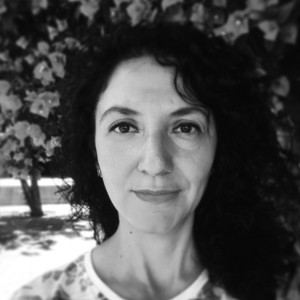
Violeta Tavizón Mondragón
Museo de Guadalupe
Practical information
Tuesday to Sunday from 09:00 to 18:00 hrs.
$100.00 pesos
Lunes a domingo de 9-18 hrs.
Salas de exposiciones temporales,
"Sala Camino Real de Tierra Adentro" y auditorio
Jardín Juárez Oriente s/n,
Colonia Centro, C.P. 98600,
Guadalupe, Zacatecas, México.
Colonia Centro, C.P. 98600,
Guadalupe, Zacatecas, México.
Located in the center of the municipality of Guadalupe, facing the Jardín Juárez. 4.5 miles from Zacatecas, it can be reached via Adolfo López Mateos Boulevard or Arroyo de la Plata street.
-
+52 (492) 923 20 89
-
This email address is being protected from spambots. You need JavaScript enabled to view it.
-
FACEBOOK
-
TWITTER
Directory
Directora
Rosa María Franco Velasco
This email address is being protected from spambots. You need JavaScript enabled to view it.
+52 (492) 923 20 89
Jefe del Departamento Administrativo
José Carlos Salas Morales
This email address is being protected from spambots. You need JavaScript enabled to view it.
+52 (492) 923 20 89
Jefe del Departamento de Museografía
Nataly Adriana Medrano Varela
This email address is being protected from spambots. You need JavaScript enabled to view it.
+52 (492) 923 20 89
Jefe del Departamento de Resguardo y Bienes Culturales
Guadalupe Antonio de Dios Sánchez
This email address is being protected from spambots. You need JavaScript enabled to view it.
+52 (492) 923 20 89
Gestor Cultural
Esthela Fonseca Rodríguez
This email address is being protected from spambots. You need JavaScript enabled to view it.
+52 (492) 923 20 89

